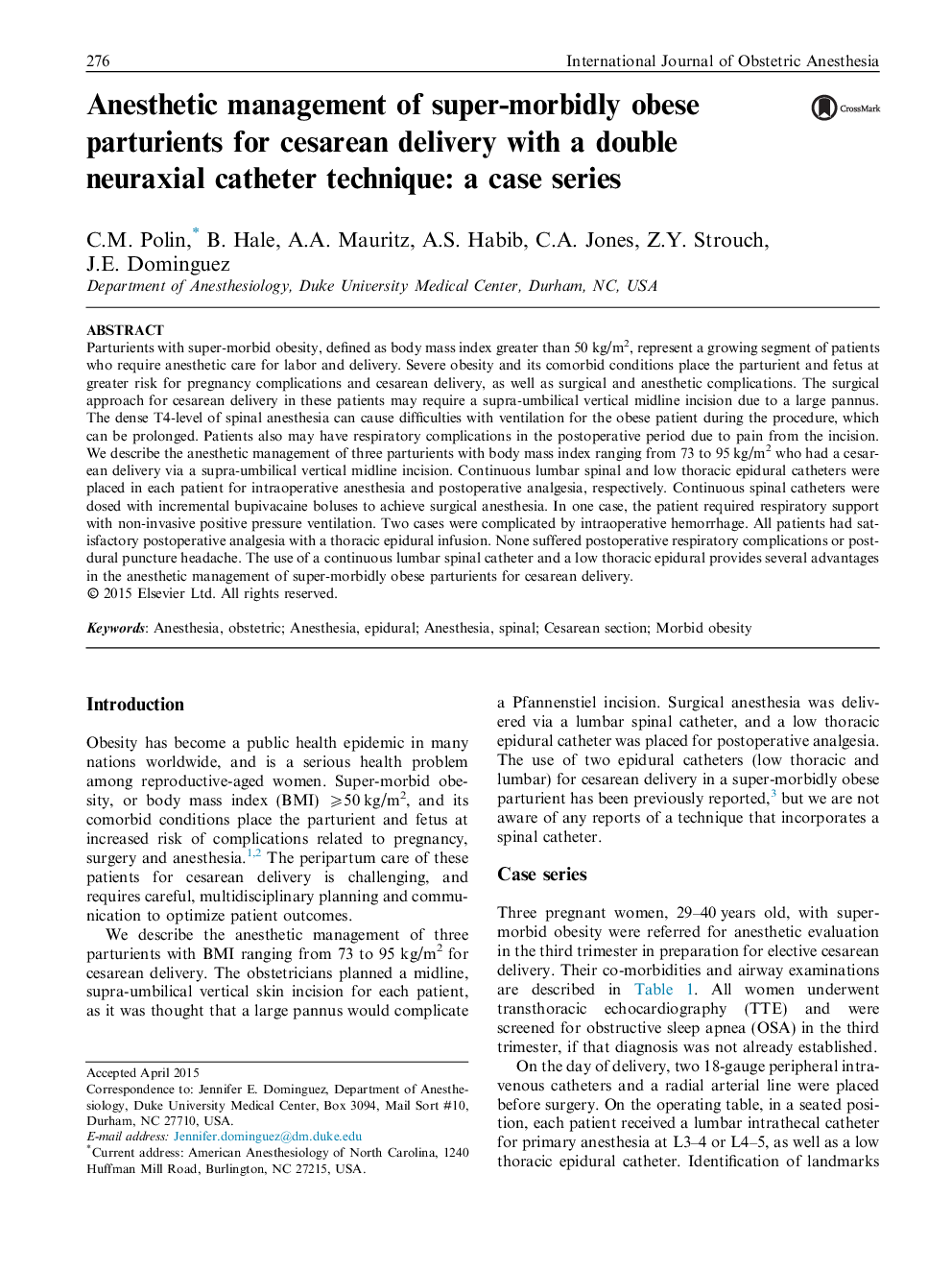| Article ID | Journal | Published Year | Pages | File Type |
|---|---|---|---|---|
| 2757528 | International Journal of Obstetric Anesthesia | 2015 | 5 Pages |
•We describe the cases of three parturients (BMI >70 kg/m2) for cesarean delivery.•Cesarean delivery was performed via a supra-umbilical midline incision.•Surgical anesthesia was delivered via a lumbar spinal catheter.•A low thoracic epidural catheter was placed for postoperative analgesia.•Two neuraxial catheters offer several advantages in high BMI parturients.
Parturients with super-morbid obesity, defined as body mass index greater than 50 kg/m2, represent a growing segment of patients who require anesthetic care for labor and delivery. Severe obesity and its comorbid conditions place the parturient and fetus at greater risk for pregnancy complications and cesarean delivery, as well as surgical and anesthetic complications. The surgical approach for cesarean delivery in these patients may require a supra-umbilical vertical midline incision due to a large pannus. The dense T4-level of spinal anesthesia can cause difficulties with ventilation for the obese patient during the procedure, which can be prolonged. Patients also may have respiratory complications in the postoperative period due to pain from the incision. We describe the anesthetic management of three parturients with body mass index ranging from 73 to 95 kg/m2 who had a cesarean delivery via a supra-umbilical vertical midline incision. Continuous lumbar spinal and low thoracic epidural catheters were placed in each patient for intraoperative anesthesia and postoperative analgesia, respectively. Continuous spinal catheters were dosed with incremental bupivacaine boluses to achieve surgical anesthesia. In one case, the patient required respiratory support with non-invasive positive pressure ventilation. Two cases were complicated by intraoperative hemorrhage. All patients had satisfactory postoperative analgesia with a thoracic epidural infusion. None suffered postoperative respiratory complications or postdural puncture headache. The use of a continuous lumbar spinal catheter and a low thoracic epidural provides several advantages in the anesthetic management of super-morbidly obese parturients for cesarean delivery.
